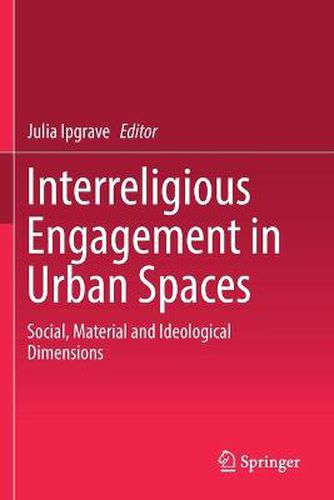Readings Newsletter
Become a Readings Member to make your shopping experience even easier.
Sign in or sign up for free!
You’re not far away from qualifying for FREE standard shipping within Australia
You’ve qualified for FREE standard shipping within Australia
The cart is loading…






This title is printed to order. This book may have been self-published. If so, we cannot guarantee the quality of the content. In the main most books will have gone through the editing process however some may not. We therefore suggest that you be aware of this before ordering this book. If in doubt check either the author or publisher’s details as we are unable to accept any returns unless they are faulty. Please contact us if you have any questions.
This book examines interreligious dialogue from a European perspective. It features detailed case studies analysed from different disciplinary perspectives. These studies consider such activities as face-to-face discussion groups, public meetings, civic consultations with members of faith groups, and community action projects that bring together people from different faiths. Overall, the work reports on five years of qualitative empirical research gathered from different urban sites across four European cities (Hamburg, London, Stockholm, Oslo). It includes a comparative element which connects distinctive German, Scandinavian, and English experiences of the shared challenge of religious plurality.
The contributors look at the issue through social, material, and ideological dimensions. They explore the following questions: Is interreligious dialogue the producer or product of social capital? What and how are different meanings produced and contested in places of interreligious activity? What is the function of religious thinking in different forms of interreligious activity? Their answers present a detailed analysis of the variety of practices on the ground. A firm empirical foundation supports their conclusions.
Readers will learn about the changing nature of urban life through increasing pluralisation and the importance of interreligious relations in the current socio-political context. They will also gain a better understanding of the conditions, processes, function, and impact of interreligious engagement in community relations, public policy, urban planning, and practical theology.
$9.00 standard shipping within Australia
FREE standard shipping within Australia for orders over $100.00
Express & International shipping calculated at checkout
This title is printed to order. This book may have been self-published. If so, we cannot guarantee the quality of the content. In the main most books will have gone through the editing process however some may not. We therefore suggest that you be aware of this before ordering this book. If in doubt check either the author or publisher’s details as we are unable to accept any returns unless they are faulty. Please contact us if you have any questions.
This book examines interreligious dialogue from a European perspective. It features detailed case studies analysed from different disciplinary perspectives. These studies consider such activities as face-to-face discussion groups, public meetings, civic consultations with members of faith groups, and community action projects that bring together people from different faiths. Overall, the work reports on five years of qualitative empirical research gathered from different urban sites across four European cities (Hamburg, London, Stockholm, Oslo). It includes a comparative element which connects distinctive German, Scandinavian, and English experiences of the shared challenge of religious plurality.
The contributors look at the issue through social, material, and ideological dimensions. They explore the following questions: Is interreligious dialogue the producer or product of social capital? What and how are different meanings produced and contested in places of interreligious activity? What is the function of religious thinking in different forms of interreligious activity? Their answers present a detailed analysis of the variety of practices on the ground. A firm empirical foundation supports their conclusions.
Readers will learn about the changing nature of urban life through increasing pluralisation and the importance of interreligious relations in the current socio-political context. They will also gain a better understanding of the conditions, processes, function, and impact of interreligious engagement in community relations, public policy, urban planning, and practical theology.